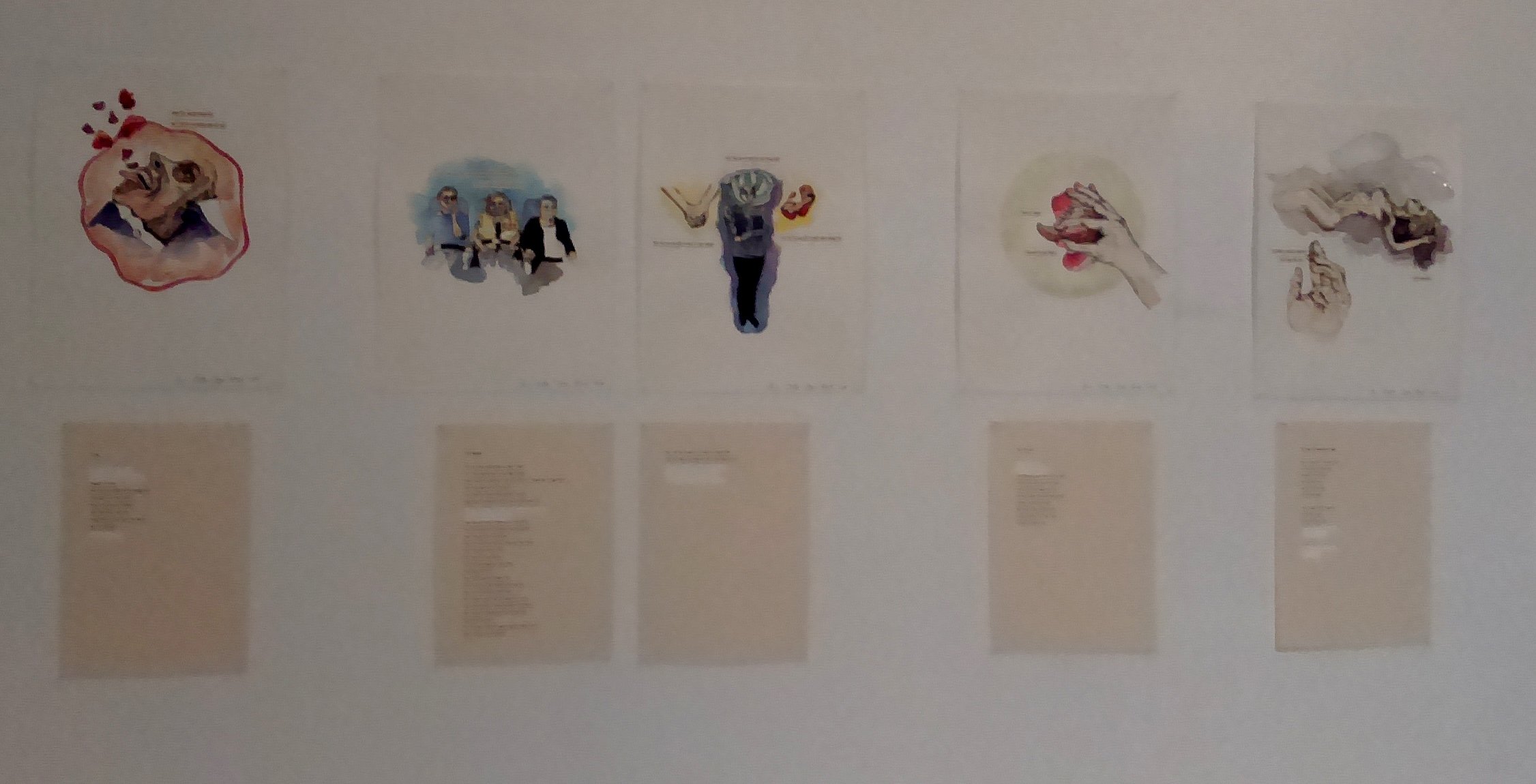The Poetic and the Artistic: Cave Paintings Exhibition
Cave Paintings in the original sense of the word, refers of course to primitive drawings on cavern walls dating as far back as the prehistoric era. It has been suggested that these works may not have been specifically intended as decoration, but rather as a form of communication and communal exchange[1]. It may be a happy coincidence then that these primitive attempts at communication lend their description to a recent collaborative project and exhibition initiated by the Dublin-based group Cave Writings.
Cave Writing was originally established as a creative space for writers to come together, to not merely read their work but also to discuss aspects of the process and creative development. Their most recent venture entitled Cave Paintings, was conceived as a collaborative project, aimed at engaging and expanding dialogue between the diverse creative disciplines of writing and the visual arts. A selection of ten artists were paired with writers, enabling open conversations, unlimited dialogue and creative exchange. Each pairing responded to their partners work in the aim of creating new and emergent forms of both visual and literary creativity.

I visited the Cave Paintings exhibition on opening night, which was constructive of physical arts objects and literary works as the products of a dialogue, displayed somewhat randomly in the tiny interior of the old Molloy and Dowling opticians. A diverse selection of mediums and abilities accompanied by the writing created in response to the art work , forms the ‘content’ of the exhibition, providing a curious if not altogether inspired exhibitionary experience.
The opening of the exhibition itself was a casual affair, the rather numerous attendees where encouraged to bring their own refreshments, (keeping in tradition of previous Cave Writings meet ups) transforming this urban cave into an unlikely focus of Monday night sociality. As part of the opening, five poems where read by their authors which elicited silence and full attention from the revellers. The poems, in keeping with the overall ambience of the event, were read in an informal or sometimes bashful style, the pertinence of the words however managed to be both thoughtful and engaging deriving a generally positive response from the audience.

The project is representative of a contemporary trajectory of creative practice identified by Claire Bishop as the Social Turn, where art becomes increasingly situated within a social context and develops further an “artistic interest in collectivity and collaboration.”[2] Perhaps the Cave Paintings project is most identifiable with Grant Kester’s ideal of a creative ‘dialogical aesthetic.’ Kester’s assertion that an increased sociality within art seen during the Social Turn demands artists to provide a ‘context’ rather than ‘content’ within their work. Context according to Kester; “is a process led, rather than a product led”[3] inquiry, invoking the particular circumstances or facts surrounding the creation of specific work. Cave Paintings embodies these ideals through the construction of spaces and collaboration between creatives. This collaboration focuses the context on an interface between two creative disciplines, and questions the development of creativity, provoking emergent possibilities.
To be fully appreciated however, the notion of context must take precedence above the content of project. This is the core of the Cave Paintings experience, even if we must traverse some of the ‘content’ to appreciate it. As Kester envisaged, within a dialogical context, the exchange between collaborators challenges existing perceptions and generates new insights at the intersection of two perspectives.

Both the poetic and artistic responses seem to transcend reconstructed experiences of the other, instead merging to form new creative forms. The dialogical nature which is on one hand, necessarily strong and integral to this project, is on the other hand slightly problematic. As a viewer, one cannot help but feel slightly frustrated by the sense that we are only seeing the end of a conversation, a final snapshot of the conclusion of a complex dialogue. Perhaps this is purely an embodiment of the selfishness of ‘audience’ to be privy to, and included in the motivations of artists. Even so I cannot help but feel some documentation of dialogues and discussions would provide a greater sense of meaning to the viewer. Instead the triangulation of engagement between artists and artwork with the audience is left to be fulfilled by informal conversations between viewers (and even internet articles). Perhaps it is that these precise initiations could be exactly the outcomes coveted by projects such as Cave Paintings, were the dialogue between writers and artists can be allowed to expand and incorporate a multitude of public conversations beyond the confines of the cave.
Click here to listen to the poetry read during the event, and see the images which inspired the writings.
Feature image via:
www.thetakeaway.org
www.allengrange.com
1 described in http://www.theguardian.com/science/2012/mar/11/cave-painting-symbols-language-evolution
2 Claire Bishop, ‘The Social Turn; Collaboration and its Discontents”, Artforum 44, No. 6, (2006), 178.
3 Brian Hand, “A struggle at the roots of the mind: service and solidarity in dialogical, relational and collaborative perspectives within contemporary art”, Last modified, June 23, 2012, http://www.imma.ie/en/page_212537.htm, accessed April 5, 2015.
